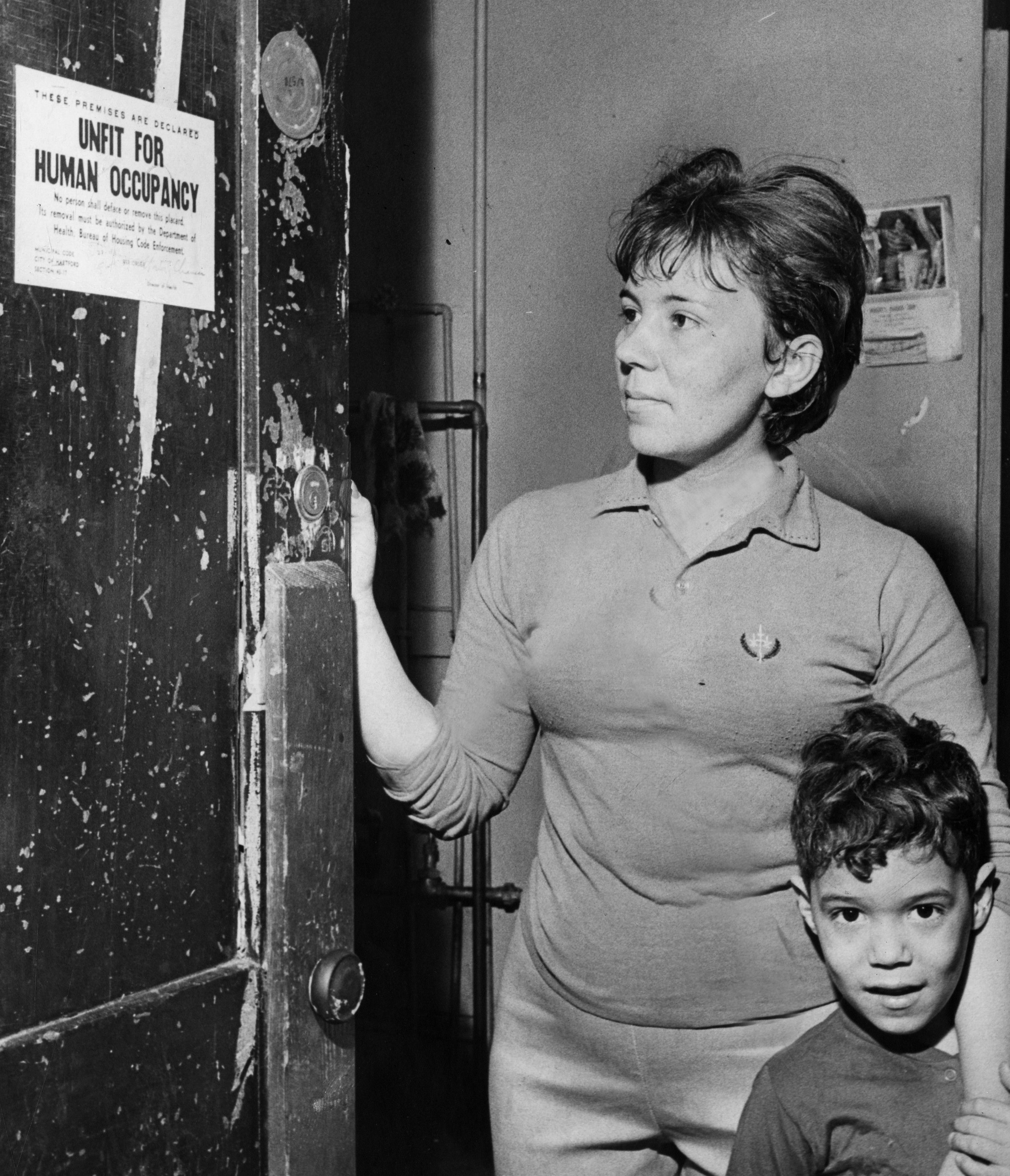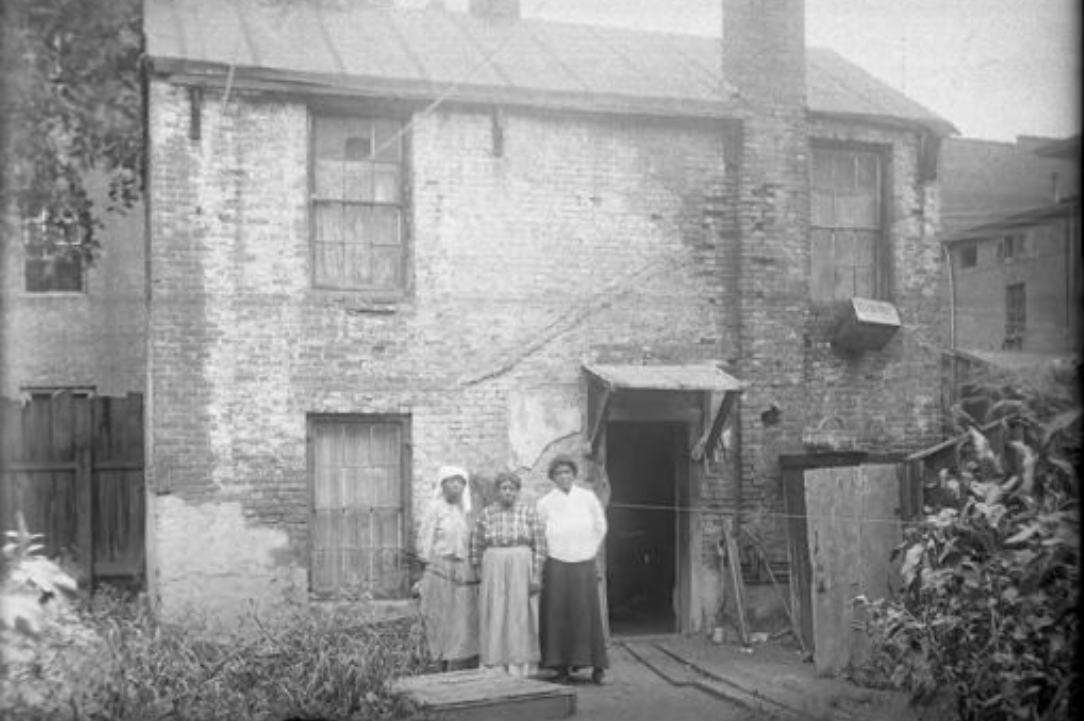Last year, a report by the National Low Income Housing Coalition found that it is difficult to find affordable housing in Connecticut, where earning the average wage for renters, $17.38 an hour, is not enough to pay for a two-bedroom apartment at the market rent of $1,295 a month. Minimum wage in the Nutmeg State is even lower, at $10.10 an hour.
But housing issues are not new to Connecticut residents, according to Fiona Vernal, associate professor of history and Africana Studies, who has developed a new exhibit at the Thomas J. Dodd Research Center focused on the struggles of Hartford County residents to find affordable housing.
Hartford remains one of the most segregated spaces … The issues people were dealing with in the 1930s don’t look so different from the issues people are dealing with now. — Fiona Vernal
“From Civil Rights to Human Rights: African American, Puerto Rican, & West Indian Housing Struggles in Hartford County, 1940-2019” is a visual depiction of archival photos and detailed information researched by Vernal and her students detailing a 70-year history of housing struggles by those who migrated to the Hartford region. The exhibit covers intertwined housing issues, including poverty, racial discrimination, residential segregation, and public housing.
Vernal and her students have previously created visual historic exhibits on topics such as child labor and human rights in Africa, West Indian immigrants in Hartford, and South Africans under apartheid. All of these projects combine public history, archival research, and community engagement.
The housing exhibition includes examples of how the local press documented the emergence of ethnic communities in Hartford, the changing life in the city, and issues of overcrowded neighborhoods. Dilapidated housing, redlining of real estate, and absentee landlords produced slum conditions in the early part of the 20th century. Vernal says students want to tell stories about what their research uncovers.

“Students are very interested in storytelling, in narrative,” she says. “They want that emotional content in the story, but the images really speak for themselves. As we start off with the design of the exhibition, the first instruction is, ‘If no one reads any of the text for this exhibition, they need to be able to walk away with the story based on the images.’ It gives you an opportunity to get people to connect with a particular takeaway from one image; whether it’s a mother and her son standing in front of a building that has been condemned, or some of the early images in the first panels where you see African American men and women standing in front of their homes, you can look at the living conditions without having any of the captions. Whether you read the caption or not, one of the questions that comes to mind is: ‘Why are the living conditions of these particular people allowed to be this way?’ ”
Vernal says the archives of the Hartford Housing Authority and the Hartford Times, both located at the Hartford History Center of the Hartford Public Library, were particularly good sources for documenting how the city of Hartford was changing. Headlines from the 1900s and 1940s are similar to those in recent years on housing issues including government officials discussing gentrification of neighborhoods and urban renewal.
“Hartford remains one of the most segregated spaces, and that is why the housing problem is so pervasive and seems so timeless,” she says. “The issues people were dealing with in the 1930s don’t look so different from the issues people are dealing with now. The connection between those two facts and this timelessness is race, ethnicity, and class.”
She adds that research for the housing exhibit has generated new ideas on how to use the information gathered for the project, including how to visually track the movement of African American, West Indian, and Puerto Rican communities from their initial settlement in the north end of Hartford to other parts of the city and nearby suburbs. While students working on the exhibit include history majors, they also include those pursuing chemistry, urban and community studies, Latin American studies, and other interests. Several are eager to continue learning about housing issues.
“Four of them have already asked if they can volunteer to work on the database during the summer,” Vernal says. “I think that speaks for itself. They have had a research experience, a writing experience, and a public engagement experience that has shifted the way they think about the contribution they can make in their particular field of study. They are from all different backgrounds, but they see how this research can impact policy and how the public can come to another way of understanding why these communities emerged, when and how they did, and how these communities can contribute their own stories.”
“From Civil rights to Human Rights: African American, Puerto Rican, & West Indian Housing Struggles in Hartford County, 1940-2019” opens at the Thomas J. Dodd Research Center, 405 Babbidge Road, Storrs, on April 17 at 4 p.m. and continues through April 29.
There will be a panel discussion about housing access and discrimination on April 17 starting at 4:30 p.m. in the Konover Auditorium. Panelists include Fernando Betancourt, executive director of San Juan Center Inc.; Pastor AJ Johnson, community organizer at Christian Activities Council and founder of Small Business Night Out; and Annette Sanderson, executive director of the Hartford Housing Authority. Vernal will moderate the discussion.



